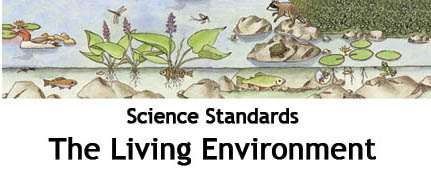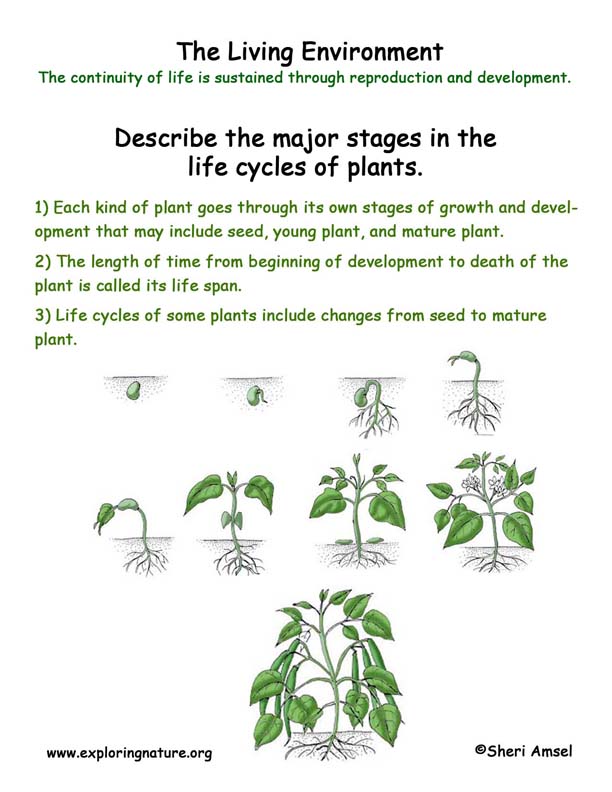

Students will understand and apply scientific concepts, principles, and theories pertaining to the physical setting and living environment and recognize the historical development of ideas in science.
The continuity of life is sustained through reproduction and development.
“It is essential for organisms to produce offspring so that their species will continue. Patterns of reproduction,
growth, and development of an organism are stages in its life cycle. Life cycle stages are sequential and occur
throughout the life span of the organism. The characteristics of the cycle of life vary from organism to organism. Note: Younger students may have difficulty in recognizing the continuity of life. Using organisms with a short life cycle as examples will be important in getting the concept across. It is important for younger students to observe life cycle changes in selected animals.” From the Elementary Science Core Curriculum Guidelines
Describe the major stages in the life cycles of selected plants and animals.
4.1b Each kind of plant goes through its own stages of growth and development that may include seed, young plant, and mature plant.
When you research information you must cite the reference. Citing for websites is different from citing from books, magazines and periodicals. The style of citing shown here is from the MLA Style Citations (Modern Language Association).
When citing a WEBSITE the general format is as follows.
Author Last Name, First Name(s). "Title: Subtitle of Part of Web Page, if appropriate." Title: Subtitle: Section of Page if appropriate. Sponsoring/Publishing Agency, If Given. Additional significant descriptive information. Date of Electronic Publication or other Date, such as Last Updated. Day Month Year of access < URL >.
Amsel, Sheri. "Living Environment: Plant Life Cycles" Exploring Nature Educational Resource ©2005-2024. December 13, 2024
< http://www.exploringnature.org/db/view/Living-Environment-Plant-Life-Cycles >

